How does aloe bloom at home?
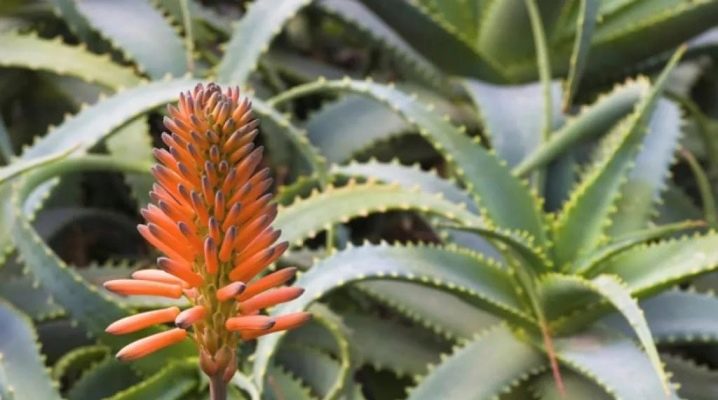
There is no grower who does not know about a succulent called aloe. It is known to most hobbyists as a medicinal plant, and only experienced professionals are aware of the beauty of the flowering of this plant.
This situation arises because it is rather difficult to create a favorable environment for the appearance of flowers at home. After all, aloe came to temperate latitudes from hot and arid Africa, where the climate is completely different.
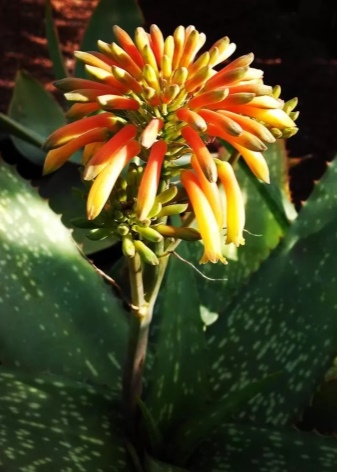

Blooming aloe species
The family of this type of flowers has, according to various sources, from 260 to 500 species, almost all of which can bloom. However, in the natural environment, such a phenomenon can be seen extremely rarely, as they say - once every 100 years. Thanks to this myth, aloe has received a different name among the people - agave.
Aloe flowers boast bright and varied colors. There are shades such as:
- White;
- Red;
- Orange;
- yellow.
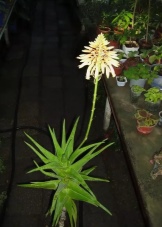
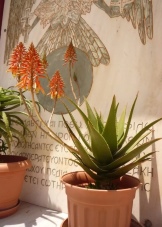

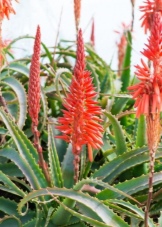
On a succulent, there can be either one flowering arrow or several. It contains a large number of small flowers, decorated in a brush. Inflorescences open gradually starting from the bottom.
It should be noted that when flowering at home, aloe seeds are not collected, since they do not have time to ripen to a suitable state.
The flowering period of this plant in natural conditions can last up to 6 months, and at home - only 3. As a rule, from February to March.
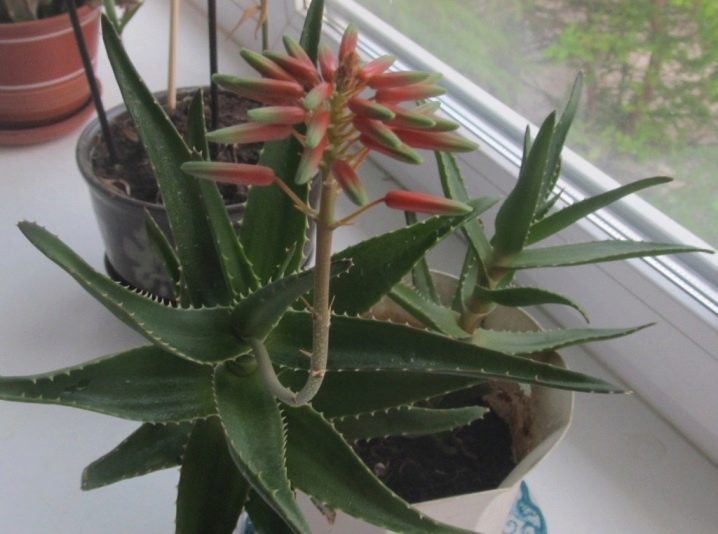
The most common types of aloe growing at home are:
- aloe vera;
- tree-like;
- variegated.
Aloe in its natural environment forms tall thickets, while potted species can be called dwarf hybrids. They bloom about once every 20 years and under the right conditions.
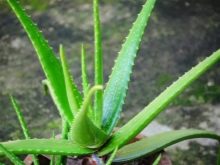
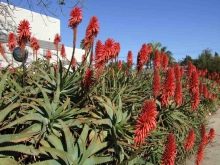
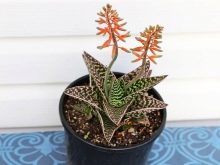
Aloe vera has fleshy stems that form a rosette. The leaves themselves are covered with white spots and have thorns on the lateral areas. Its tassel-like inflorescences come in a rather faded orange hue.

The tree type is distinguished by its high growth rate and healing properties. Its leaves are also collected in the form of a rosette, in color it is a mixture of gray and green. Inflorescences delight with their palette, which has at least 4 shades:
- Red;
- yellow;
- pink;
- scarlet.
However, this variety blooms very rarely.

The variegated aloe has a green and white brindle color. The maximum leaf height is 30 cm. This species looks great with any decor, therefore it is in demand among flower growers. It also rarely blooms pink or yellow.
It is worth noting that not only tree-like aloe can be considered medicinal, but also other species. Their healing properties are actively used by cosmetologists to rejuvenate the skin and treat its defects.

Periodicity and timing of flowering
The generally accepted concepts of the frequency of flowering of aloe with an interval of 2 decades are fairly approximate. With proper care, the plant at home can bloom more often. As a rule, a single flower appears in the axils of the upper leaves. Aloe inflorescences have a fairly large amount of nectar, which spreads a strong aroma. Therefore, allergy sufferers should be careful with it.
It is necessary to remember about the peculiarities of the development of this plant. For the first three years it has been growing very actively. This period is characterized by the absence of the need for wintering.
Given the fact that aloe forms inflorescences only after the winter dormant period, one should not wait at the very beginning of the flowering arrows.
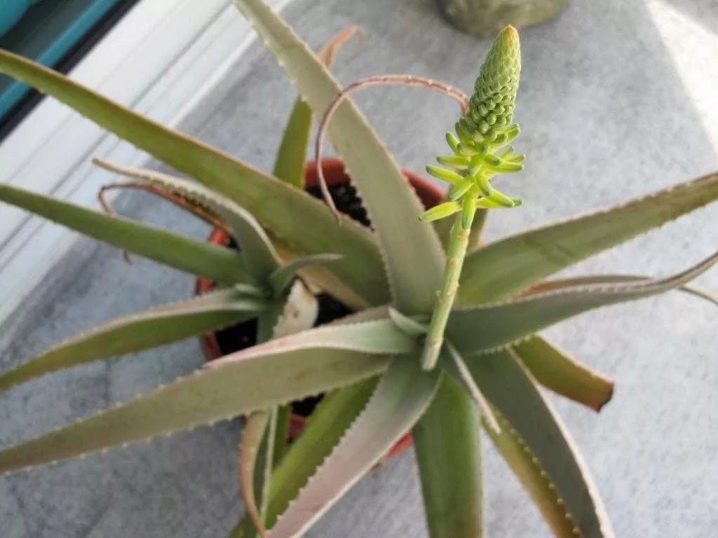
The period of winter dormancy for the plant is created artificially. To do this, the flower is placed in a cool place and watered much less frequently. In this case, the earth should be semi-dry. Such conditions will be organized in the fall. It is advisable to transplant the aloe into a large container before that. The best time for the procedure is spring. So, before wintering, the plant will have time to adapt to a new place and soil.
After carrying out these manipulations, special conditions are created for flowering. At the same time, it is not recommended to move and turn the flower pot, as well as fill it with water.
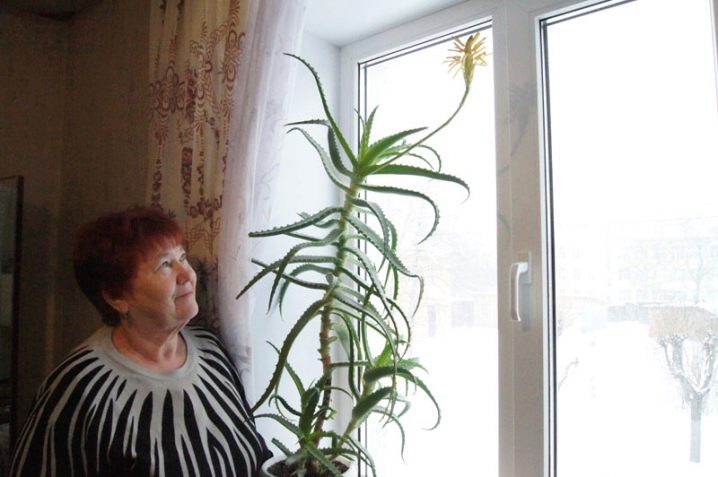
Why are there no peduncles?
The plant does not always start to bloom after following the above steps. There can be several reasons for this behavior of aloe. Namely:
- small age of the flower;
- lack of light;
- excess moisture in the pot;
- unsuitable soil;
- prolonged postponement of the transplant;
- high air humidity;
- lack of a dormant period (wintering);
- the occurrence of diseases or pests.
Most of these factors stem from the fact that breeders forget about the desert origin of aloe. So, dry air, a small amount of moisture, long daylight hours are natural for it.
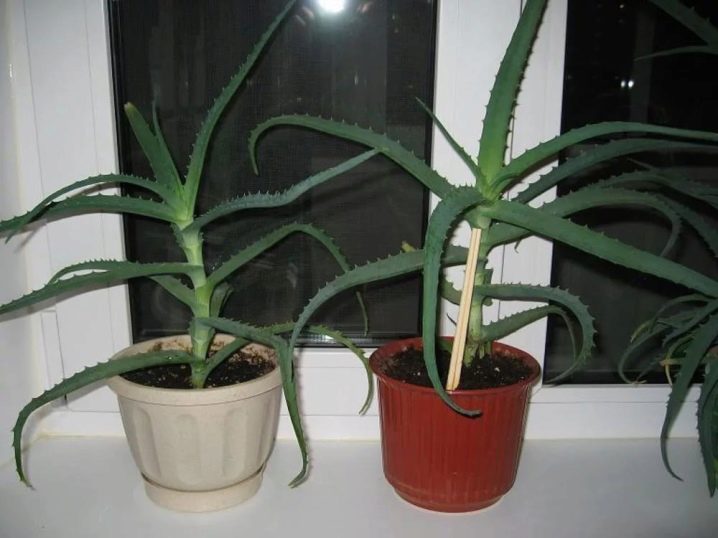
As for the correct soil for this succulent, it should be pH neutral or slightly acidic. And also this type of desert plants does not tolerate soil with high density.
The roots require a fairly free constant supply of oxygen, which is provided by adding gravel to the pot. For these purposes, you can also use charcoal with brick chips.
Do not forget about fertilizers, which are used as ordinary humus. An obligatory component is the land of several types: deciduous and soddy. The presence of coarse sand in this mixture will also be a plus. In this case, it is better for them to sprinkle the drainage (2 cm) and the ground only from above.
A simpler option may be store-bought soil, which does not have to be mixed, fertilized and disinfected. The name of such a composition should sound like "for cacti" or "for succulents." They contain combinations of elements that are optimal for aloe.
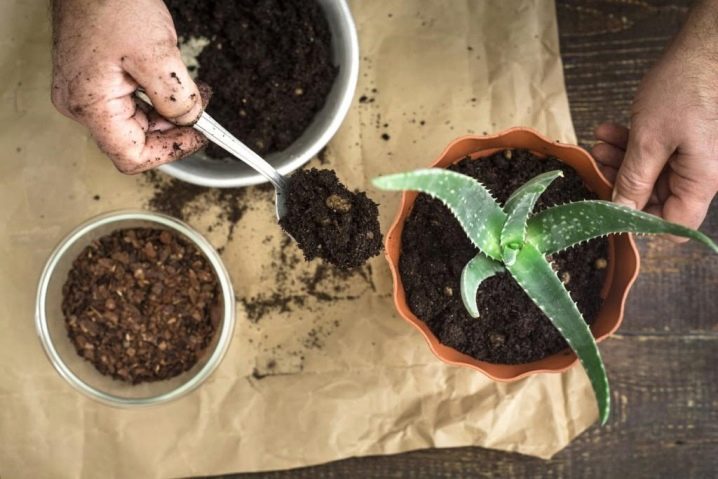
And also an important task in the cultivation of aloe is the prevention of the appearance of harmful insects and various diseases. There are not very many of them, and they rarely occur, mainly due to improper home care. Hobbyists are often misled by the unpretentiousness of the plant, and they stop taking care of it properly.
All diseases of this plant can be divided into three types:
- dry leaf rot;
- root rot;
- the appearance of pests (spider mites, scale insects or mealybugs).
The most important is the timely determination of the disease that has arisen. Then the plant can be cured.


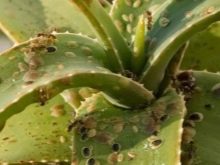
The most dangerous pest is the spider mite, since it is difficult to notice at the initial stage. Therefore, the main attention should be paid to such signs as yellowing and drying of the leaves, as well as the formation of a small thin web in the lower part of the aloe. To prevent this disease, it is necessary to periodically wipe the succulent with alcohol or sprinkle with garlic tincture.
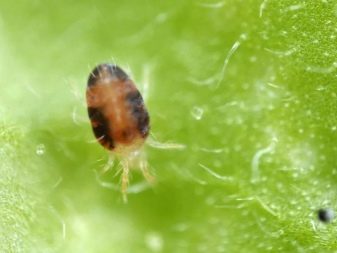

Of the diseases, the most dangerous is dry rot, which is difficult to diagnose and, accordingly, to treat in a timely manner. Prevention in the form of proper maintenance and timely spraying plays a key role. Such a plant is practically not amenable to treatment.
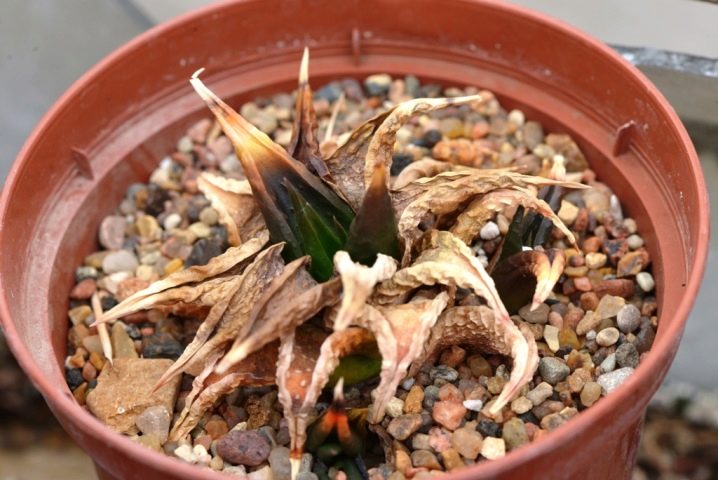
Root rot is also considered a common problem, especially for beginner growers. It should be remembered that watering aloe is permissible no more than twice a month, since it is the excess moisture that leads to decay. If the plant begins to experience a delay in development, then you need to try to transplant it, checking for root rot. In case of incomplete damage to the rhizome, the damaged area is removed, the remaining part is wiped off with ash, and the flower is planted in a new flowerpot.

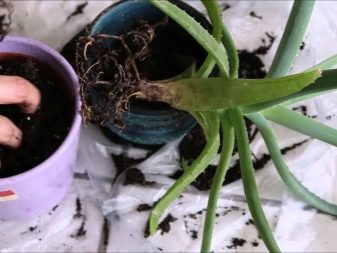
How to create the necessary conditions?
In order to make the aloe bloom, it is necessary to create a favorable climate for it, reminiscent of the conditions in the desert. So, the following rules must be followed:
- cool temperature (from +10 to +14 degrees Celsius);
- artificial lighting to increase daylight hours;
- low indoor humidity;
- use for watering a tray with water.
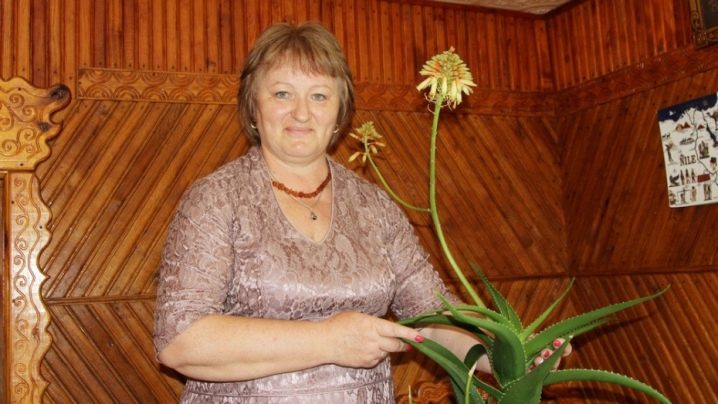
During the flowering period, it is considered normal to increase the temperature by 10 degrees. A more important factor is long-term exposure to ultraviolet radiation (daylight hours).
In order for the flower to bloom, do not forget about feeding it. Aloe, like other plants, consumes more nutrients during flowering. Top dressing should be done 2 times a month. For maximum effect, it is recommended to loosen the soil before the procedure. If the selected fertilizers have a liquid consistency, then when applying them, it is necessary to ensure that the solution does not fall on the leaves.
Subject to the above measures, aloe flowers will not keep you waiting. Their long and beautiful flowering will delight the eyes of the hostess and all household members.
How aloe blooms at home, see below.























































The comment was sent successfully.